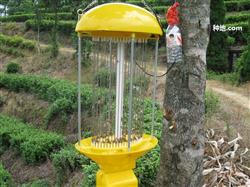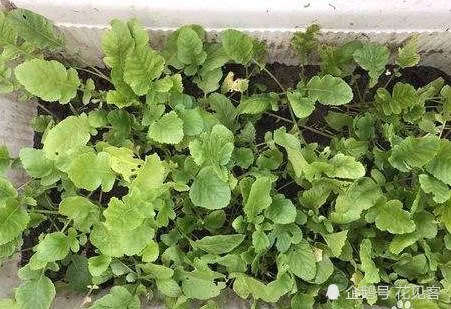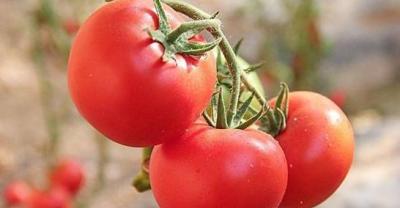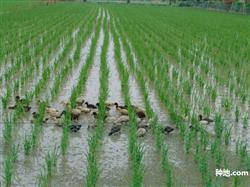non-pollution Learn more about non-pollution
-
Non-pollution conditions of chicken claw fungus

Coprinus comatus is favored by mushroom farmers because of its rich nutrition, delicious taste, smooth meat and large market demand. It has been widely cultivated in all parts of the country and has a very broad development prospect. However, the majority of mushroom farmers are often troubled by a kind of Xylaria racemosa (commonly known as chicken claw fungus) in actual cultivation. Due to neglect of prevention and control, some high-residue pesticides are randomly used until large-scale infection occurs. Not only has no curative effect, but also often causes pesticide residues in finished mushrooms to exceed the standard, affecting product sales. For example, in mid October 2006, Hubei Province
2019-01-15 -
New cultivation techniques of Potato with High efficiency and non-pollution

The high-efficiency and pollution-free cultivation technology of potato has the most significant effect on the gentle slope of red soil hilly land, which can mature more than 15 days earlier than the potato cultivated by common methods in the same period, save fertilizer by 30%, save labor by 2-3, save cost by more than 40%, increase production by 150%, and increase the rate of large potatoes by 30%, 40%, 667 square meters and more than 700 yuan. First, select improved varieties: early and middle maturity varieties with high quality, high yield and strong resistance should be selected, and virus-free varieties are better. The varieties available are
2019-01-16 -
Non-pollution tea tree management technology

Tea garden soil should be tilled frequently to facilitate microbial activities, accelerate soil maturation, promote the release of mineral elements, and facilitate root absorption. Depending on the soil structure, shallow tillage is carried out several times a year at a depth of 5~10 cm; intertillage is carried out 2~3 times at a depth of 10~15 cm; deep tillage is carried out once a year or every other year at a depth of 25~30 cm. Shallow tillage and intertillage can be combined with weeding and topdressing in each tea season, while deep ploughing can be combined with clearing garden or applying organic fertilizer. Application of organic fertilizer in tea garden can improve soil physical and chemical properties and nutrient sustainable supply capacity;
2019-01-16 -
How to control orchid diseases and insect pests without pollution

How to control orchid diseases and insect pests without pollution
2018-04-26 -
Dry garlic peeling machine

1. Using the specially designed peeling principle, garlic cloves are completely free from blade and hardness friction in the peeling process, so it can ensure the integrity, freshness and non-pollution of the processed products. 2. It has the characteristics of drying, peeling, automatic operation, practical, power saving, small size, high production efficiency, easy maintenance and cleaning, and low failure rate. 3. Equipped with automatic temperature control and automatic material guide device, garlic kernels and garlic skins are separated automatically, and the products meet the hygienic standards. Garlic kernels are not easy to damage, so they can be stored for many days.
2019-01-16 -
Green flowers, which plants are suitable to be hydroponic plants

Hydroponic plants are favored by flower consumers at home and abroad because of their clean, elegant style, strong ornamental, environmental protection and non-pollution. The following are several hydroponic culture methods that can be made: Araceae plants are: tortoise back bamboo, hulk, Guangdong evergreen series, Cong Chunchun jade, emerald, emerald
2019-05-18 -
Preparation method of bee feed

Non-polluting alternative raw materials are selected to make bee feed as follows: 1. Sucrose (white sugar) is used to make substitute feed. The white syrup can be used to feed the bees directly, and the appropriate use time is: when overwintering, sucrose should be stopped 3 days before the last batch of lids leave the room. The advantage of this is that the overwintering feed in the nest has been transformed, but the overwintering age bees did not participate in making honey, so it can maintain the activity and energy of bees and prolong the life span of bees. two。 Syrup is used to make alternative feed. Added by sucrose (brown sugar cannot be used, the same below)
2019-01-16 -
How to prevent pests from pollution-free tea?

How to prevent pests from pollution-free tea? Please guide the methods of non-pollution pest control of tea: first, intercropping other tree species in the remaining corner of the slope around the tea garden, properly planting some trees such as ginkgo biloba and persimmon (planting Eucalyptus grandis is strictly forbidden), improve the microclimate of the tea garden, increase biodiversity, and reduce the occurrence of tea plant diseases and pests. Plant per mu.
2018-07-18 -
Is it okay to eat raw lotus root?

Lotus root can be eaten raw, high nutritional value, and green non-pollution, fresh lotus root after washing and peeling can be eaten directly, crisp and sweet, but also can clear heat and relieve cough. If the lotus root is not very fresh after long-distance transportation in the north, it is not recommended to eat it raw.
2020-11-08 Lotus root raw OK yes nutritious. -
Three provincial agricultural standardization demonstration zones in Xiamen have passed the acceptance test.

Recently, Xiamen Baili Seedling Co., Ltd., vegetable Seedling cultivation Provincial Agricultural Standardization demonstration Zone, Xiamen Xinlongxi Fruit and vegetable specialized Cooperative Green Bamboo shoot planting Provincial Agricultural Standardization demonstration Zone, Xiamen Sanxiushan vegetable specialized Cooperative non-pollution vegetable planting Provincial Agriculture
2015-12-26 Xiamen three provincial agriculture standardization demonstration zones through -
Cicada monkey (golden cicada) breeding need to invest how much money? How long will it take to harvest? With culture technology, the demand for golden cicada is so strong, which aspects should be paid attention to in breeding golden cicada?

Cicadas are known as golden cicadas, also known as climbing monkeys, cicadas, cicadas, grasshoppers, and so on. In the vast areas of the middle and lower reaches of the Yellow River, there is a habit of eating cicadas. Let's take a look at the breeding techniques of cicadas. What preliminary work should be done to raise cicadas? Golden cicada is very popular in recent years, large and small restaurants, barbecues have cicada monkey made dishes barbecue, because of the cicada monkey's rich nutrition, green non-pollution, and delicious taste, very popular [more]
2019-04-10 -
This kind of high-calcium dish is good for the health of the elderly and children. The balcony is delicious and good-looking.

With the improvement of people's living standards, more and more people have a better pursuit of food, especially vegetables, prefer to eat some natural and non-polluting organic vegetables, so most people will grow some vegetables on the balcony. Every kind of vegetable.
2018-10-14 -
Introduction to the common species of dried wild vegetables

China is one of the areas with the longest history of utilization of wild vegetables, which is rich in wild vegetable resources, widely distributed and profound in culture. Wild vegetables have the characteristics of unique flavor, natural non-pollution, safety and no agricultural residues, high nutritional value, homology of medicine and food, and so on.
2020-11-27 Dried wild vegetables common species introduction I the country wild -
Dendrobium candidum planting substrate, did you choose the right one?

Dendrobium was listed as the first of the nine immortal herbs by Daozang 2000 years ago. Shennong Materia Medica Classic lists it as the top grade: "strengthening yin and nourishing essence, thickening intestines and stomach, tonifying never."
2019-02-26 -
Processing of preserved Sweet Potato

1. Raw and auxiliary materials: fresh sweet potato, granulated sugar, sugar, citric acid, sodium sulfite, edible gelatin, quicklime and so on. 2, technological process: sweet potato-cleaning-peeling-slicing-color protection-hardening-blanching-soaking gum-sugar boiling-sugar soaking-baking-packaging-finished product 3, process operation points: ① cleaning: select fresh potatoes with compact texture, non-invasive, non-pollution, non-rotting, block-shaped and round, and wash the soil by machine or manual. ② peeling: use a peeling machine or manual peeling to remove potato skins. Make an appointment to 1
2019-01-16 -
Introduction of 25 kinds of wild vegetables in Chongqing

China is rich in wild vegetable resources, widely distributed, with unique flavor, natural non-pollution, safety and no agricultural residues, high nutritional value, homology of medicine and food, high nutritional value, medicinal efficacy and health care function. Wild vegetables are distributed all over the country, and Chongqing is due to its original terrain.
2020-11-27 Chongqing 25 species wild vegetables species introduction China -
Introduction: pollution-free control methods of rice diseases and insect pests

Methods of non-pollution prevention and control of rice diseases and insect pests: (1) Rice field tillage: during the peak period of pupation of rice borer in winter (March 20 in southern Jiangxi, April 1 in central Jiangxi, and April 10 in northern Jiangxi), ploughing winter fallow fields and green manure fields, soaking in deep water, so that the borer can not normally Eclosion, to kill pupae and reduce the occurrence base.
2018-09-09 -
Why does potted magnolia rot its roots? What about the rotten roots?

It is said that ink orchid watered with Rain Water is the best, take the hard work to pick up Rain Water to moisten the ink orchid, how to expect, or rotten roots, yellow leaves, do you also encounter such distress? The rotten roots of Magnolia mostly occur in winter, mostly because the soil is not permeable, and excessive watering leads to rotting roots.
2019-05-31 -
Technical specification for field production of pollution-free king

Technical specification for field production of pollution-free king
2018-06-28 -
Cultivation techniques of Lentinus edodes in spring and control techniques of common diseases and insect pests

The cultivation of Lentinus edodes in spring should pay attention to the following points: 1. Select pieces. Fully dry the pieces and tubes of Lentinus edodes with good bacteria, and choose non-polluting, complete pieces or tubes for treatment. if the old skin is too thick, you can scratch the bacteria until the hyphae heal. 2 、
2020-11-09 Lentinus edodes spring cultivation techniques and common diseases and insect pests control
